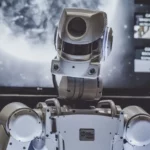Claude and ChatGPT are two language models developed by OpenAI, but they serve different purposes. Claude is a large language model based on the GPT-3.5 architecture, while ChatGPT is a conversational AI model designed specifically for chatbots and virtual assistants. In this article, we will explore the capabilities, use cases, and limitations of both models.
✅ Related: Google Bard AI: features, Uses and Benefits
What is Claude?
Claude is a large language model developed by OpenAI, based on the GPT-3.5 architecture. It is designed to generate human-like text and has been trained on a vast corpus of data to improve its language capabilities. Claude’s strength lies in its ability to create coherent and fluent text that is indistinguishable from human writing.
It can be trained on specific domains, allowing it to generate content that is relevant to a particular topic. Its language generation capabilities are unmatched, and it is capable of generating text that is both informative and engaging.
How Does Claude Work?
Claude uses a neural network to process input text and generate output text. The neural network is trained on a vast corpus of data, allowing it to learn patterns in language and generate text that is coherent and fluent. Claude can be fine-tuned on specific domains, allowing it to generate content that is relevant to a particular topic.
Strengths of Claude
Its strengths of Claude include:
- High-quality language generation capabilities
- Ability to generate coherent and fluent text that is indistinguishable from human writing
- Can be trained on specific domains, allowing it to generate content that is relevant to a particular topic
- Ideal for generating high-quality text for content creation, such as articles, essays, and stories
- Capable of generating content for social media posts and emails
- Can be used for language translation and summarization
Limitations of Claude
The limitations of Claude include:
- Requires a large amount of training data to achieve optimal performance
- Can be computationally expensive to train and use
- May generate biased or inaccurate content if the training data is biased or limited
- May not be suitable for conversational AI applications
What is ChatGPT?
ChatGPT is a conversational AI model developed by OpenAI, designed specifically for chatbots and virtual assistants. It is based on the GPT architecture and is trained on a large corpus of conversational data, allowing it to generate responses to user input in a conversation-style format.
✅ HOW FREE ROOMGPT IO WORKS? STEP-BY-STEP GUIDE
How Does ChatGPT Work?
ChatGPT uses a neural network to process user input and generate responses. The neural network is trained on a vast corpus of conversational data, allowing it to learn patterns in language and generate responses that are relevant to the user’s query. ChatGPT can be fine-tuned on specific use cases, allowing it to generate responses that are tailored to the user’s needs.
👉 ROOMGPT IO FREE HOME AND ROOM DESIGN GENERATE WITH AI
Strengths of ChatGPT
The strengths of ChatGPT include:
- Designed specifically for conversational AI applications, such as chatbots and virtual assistants
- Capable of generating responses to user input in a conversation-style format
- Can be fine-tuned on specific use cases, allowing it to generate personalized responses to users
- Ideal for customer support and other conversational AI applications
- Can be integrated into chatbots and virtual assistants
Limitations of ChatGPT
The limitations of ChatGPT include:
- May generate responses that are not relevant to the user’s query
- May generate responses that are repetitive or lack variety
- May not be suitable for generating long-form content, such as articles or essays
- May not be as fluent as Claude in generating human-like text
Comparison of Claude and ChatGPT
Now that we have explored the capabilities, use cases, and limitations of both Claude and ChatGPT, let’s compare them.
Language Generation Capabilities
Claude has superior language generation capabilities compared to ChatGPT. It is capable of generating high-quality text that is indistinguishable from human writing, making it ideal for content creation, such as articles, essays, and stories. ChatGPT, on the other hand, is designed specifically for conversational AI applications and may not be as fluent in generating human-like text.
👉 CHATGPT FOR LAWYERS: LEGAL CASES, ISSUES, RESEARCH
Use Cases
Claude is ideal for generating high-quality text for content creation, such as articles, essays, and stories. It can also be used for language translation, summarization, and content generation for social media posts and emails. ChatGPT, on the other hand, is designed specifically for conversational AI applications, such as customer support, chatbots, and virtual assistants.
Limitations
Both Claude and ChatGPT have their own limitations. Claude requires a large amount of training data to achieve optimal performance and may be computationally expensive to train and use. It may also generate biased or inaccurate content if the training data is biased or limited. ChatGPT, on the other hand, may generate responses that are not relevant to the user’s query and may not be suitable for generating long-form content, such as articles or essays.
Fine-Tuning Capabilities
Both Claude and ChatGPT can be fine-tuned on specific domains, allowing them to generate content that is relevant to a particular topic or use case. However, Claude’s language generation capabilities make it more suitable for generating high-quality content for content creation, while ChatGPT’s conversational AI capabilities make it more suitable for personalized responses in chatbots and virtual assistants.
Integration with Chatbots and Virtual Assistants
ChatGPT is designed specifically for chatbots and virtual assistants, making it easier to integrate into these applications. It can be fine-tuned on specific use cases, allowing it to generate personalized responses to users. Claude, on the other hand, may require more customization to integrate into chatbots and virtual assistants, but its language generation capabilities make it more suitable for generating high-quality content for these applications.
Both Claude and ChatGPT have their own unique strengths and weaknesses, and it would be unfair to claim that one model is better than the other. It ultimately depends on the specific use case and the requirements of the application.
Claude’s language generation capabilities make it more suitable for generating high-quality content for content creation, while ChatGPT’s conversational AI capabilities make it more suitable for personalized responses in chatbots and virtual assistants.
Both models have made significant contributions to the field of AI, and their capabilities continue to improve with ongoing research and development.
FAQS
Is Claude more powerful than ChatGPT?
It’s not fair to compare Claude and ChatGPT as they have different purposes and strengths.
What is the token limit for Claude?
The token limit for Claude is not fixed and can vary depending on the specific use case and training data.
Does ChatGPT have competitors?
Yes, ChatGPT has competitors in the conversational AI space, such as IBM Watson Assistant, Claude, and Microsoft Bot Framework.
Does Claude use GPT?
Yes, Claude is based on the GPT-3.5 architecture, which is a variation of GPT.






